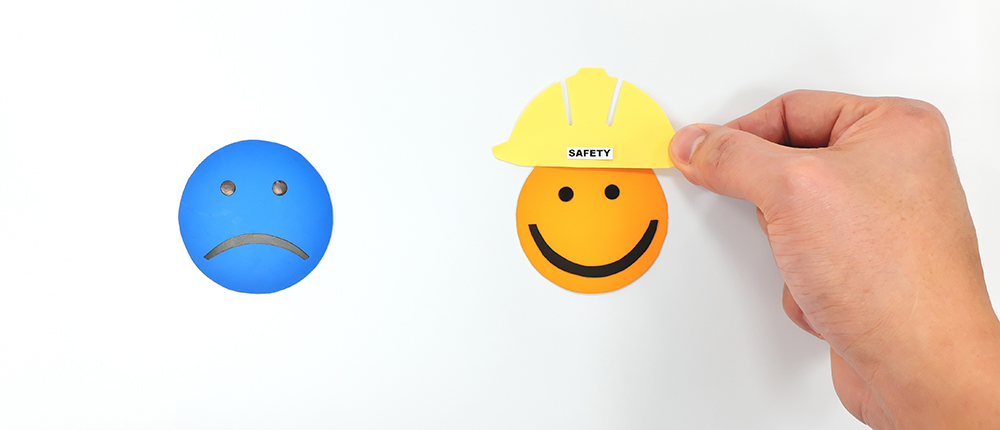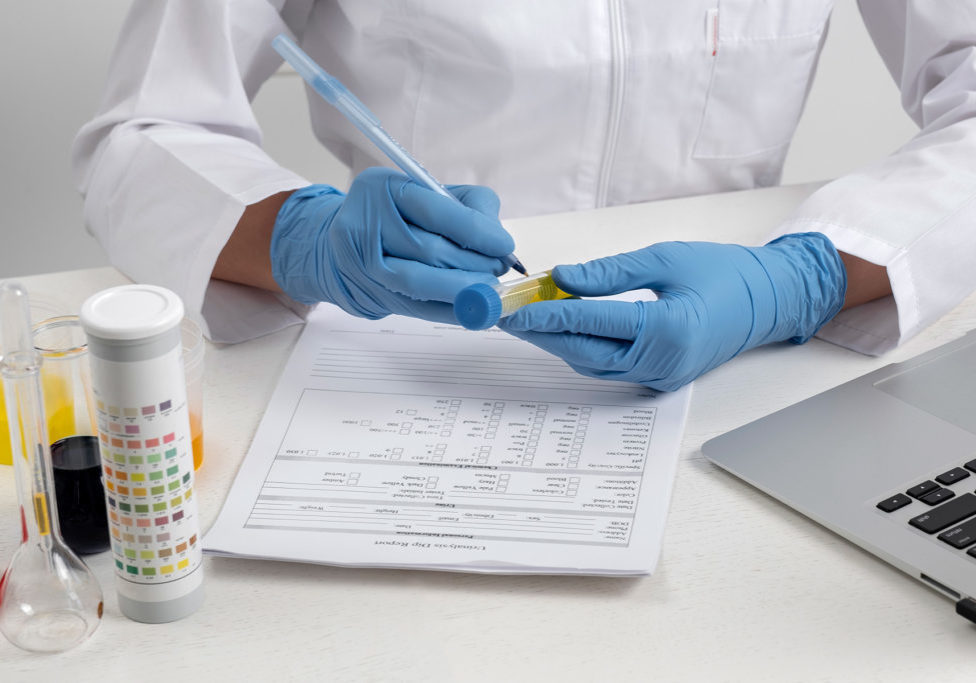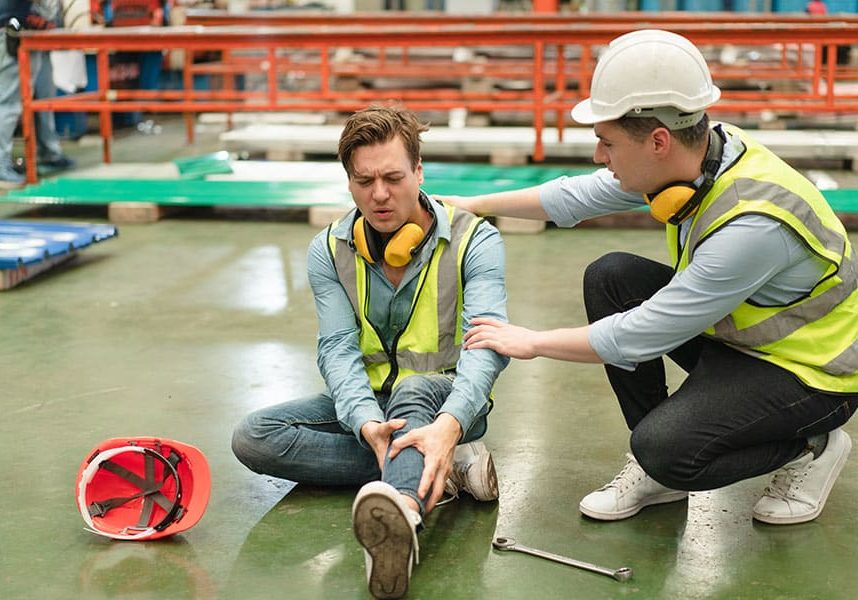Hundreds of people are injured in accidents at work each year …and the number of reported incidents is on the rise.
For comparison, the number of nonfatal workplace injury cases related to illness dropped by 32.9% from 2020 to 2021. At the same time, the number of incidents connected to workplace injuries rose by more than 4%.
What’s even more revealing is the fact that even in the worst of the pandemic, labor statistics still had workplace injuries outnumbering workplace illnesses by nearly four to one.
The good news is that it’s an issue that employers can minimize with the right strategy and tools. Things like gauging the integrity of your employees or improving your hiring practices can play a huge role in their safety. How? Let’s break it down, shall we?

4 Common Workplace Accidents
There are many ways workplace incidents can occur (several of which are included below).
Keep in mind that while the specifics of each scenario are different, many of these situations have several themes in common. For instance, they might involve miscommunication or misuse of company protocols. Perhaps an injured employee, coworker, or employer didn’t replace a machine when it was old, update software, follow clearly established rules, or use protective equipment.
These consistent workplace injury themes are why one of the best ways to address all of these concerns at once is to vet the integrity and ethics of new employees. This ensures that you’re hiring honest, hard-working individuals who will follow safety protocols and put in the extra work to maintain a safe workspace.
Before we get too far into the integrity question, though, let’s take a look at some common culprits for workplace accidents.
Slip and Falls at Work
Falling is one of the leading reasons for workplace injuries. According to data from the National Safety Council, in 2020, slips, trips, and falls were responsible for 211,640 nonfatal injuries that required time away from work. They also were the second most common cause of death, leading to 805 fatalities.
In extreme cases, such as with the construction industry, severe injuries from falls are associated with height. And in those cases, training and protective gear (both of which are regulated by OSHA) are important to safeguard each worker’s body during daily activity.
Falls are common in many workplace environments, too, such as healthcare or food service. A fall minor fall could take place due to anything from a faulty piece of equipment or an unsafe area for walking.
Getting Struck by Workers, Equipment, or Falling Objects
Bumping into someone or banging a hip on a counter is normal in the workplace. When the result of an unpleasant encounter with a foreign object is more severe, it can become a workplace injury.
For instance, when you work in an industry at high risk, like manufacturing or transportation, the damage is much more severe. This can include serious hand injuries, severe limb or finger severities, trauma-induced head injuries, and fractures.
The rise of individuals walking into walls, windows, and other objects while looking at their phones is a good example. This number has steadily risen year over year, leading to approximately 76,043 injuries in the U.S. in the past two decades — many of which became workplace accidents.
Motor Vehicle Accidents
It should come as no surprise that vehicle accidents are a major cause of workplace injury incidents. Many occupations involve driving. Having employees drive opens up the doors for getting injured through carelessness, mistakes, exhaustion, and other factors that lead to risky behavior.
Unlike, say, trip and fall accidents, transportation incidents don’t cause as many nonfatal injuries. However, they remain the major cause of worker deaths (see NSC link above).
Overexertion and Muscle Strains
Overexertion injuries such as muscle strains and repetitive strain injuries are often debilitating for the patient. An occupational injury can happen in many ways. Lifting boxes, pulling equipment, and carrying heavy items over long distances or for lengthy periods of time are all common issues. So is the need to sit, stand, bend, or perform repetitive tasks.
While less dangerous than driving a commercial vehicle or working at a height, this is still a significant risk factor in most workplaces, from hospitals to the hospitality industry and everything in between. This simple yet profound potential for common workplace injuries is why breaks are often required throughout the day. It has even led the Occupational Safety and Health Administration to establish ergonomic instruction programs and resources.
These are just a handful of the major occurrences. We didn’t even touch on things like workplace violence, harmful substances, and even quiet workplace accident related injuries like carpal tunnel syndrome.

The Cost of Common Workplace Accidents
Work-related injuries can lead to a variety of unwelcome side effects. Here are a few common ones.
Harm to Workers
This obviously starts with the physical, mental, and emotional harm done to the victims of a workplace incident. They must process physical pain, learn to cope with long-term injuries, and miss out on extensive periods of work.
Harm to Your Company’s Reputation
In addition to the obvious, there is also the reputational damage to your brand that comes with maintaining a risky-heavy work environment. This can deter quality candidates from applying (which makes finding honest, integrity-focused employees that much harder).
Harm to Your Bank Account
Don’t forget the dollars and sense. Workers’ compensation benefits are expensive at any time. If you have an inordinate number of claims, though, it can lead to even higher costs.
If you’re trying to get a lid on too many workplace injuries, you need to take action — starting with weeding out injury-prone candidates right at the beginning of the hiring process.

How Do You Handle an Accident in the Workplace?
There are many ways to address the concern of dangerous and expensive workplace incidents. These tend to fall into one of two categories: safety precautions for existing workers and further precautionary measures during the hiring phase.
Setting Up Real-Time Protection and Safety Equipment
It’s important to take proper precautions for existing employees, especially in a high-risk environment. For instance, one of the most common types of safety is for falls. If your employees operate power lines, they should be protected against electrocution. Workers who labor at a height are also in lasting physical harm, which is why OSHA requires fall protection.
During other physical tasks or when facing unnecessary hazards, appropriate accident measures should be implemented, too. This spans the gamut and can include anything from wearing safety goggles or a seat belt to avoiding loose clothing that can get caught in machinery, reducing or blocking out loud noises, clearing walking surfaces, and even purchasing ergonomic chairs.
Basic solutions like these can help avoid common workplace accidents, such as broken bones and internal organ injuries associated with falls or crush injuries. It can also manage the damage caused by common types of exposure or making contact with harmful substances. Depending on the setting, it can even address the soft tissue damage, ocular pain, strained backs, and other injuries that come when you work with bad ergonomics, poor lighting, or you fail to avoid overexertion or repetitive motion while on the job.
Digging Deeper Into On-Site Workplace Protection
Providing proper protection for your staff from common workplace injuries requires more than just safety equipment. You also want to emphasize key traits that reinforce a safe work environment. We’re talking about things like focus and staying alert.
Practicing transparency and communication is also essential. Vertical communication between employees and employers is especially important. It empowers your workers to speak up and expose potential hazards before they become a problem.
You can encourage these characteristics through things like advanced training and seminars. At the end of the day, though, safety education only works if you’re instructing honest, teachable staff members.
In other words, you need to have a rock-solid team of individuals in place from the start if your workplace is going to remain safe over time.

How Does Integrity in Hiring Positively Influence Workplace Injuries?
Along with a safe workplace environment, you also want to consider how you hire your staff. Your ability to weed out those who lie, steal, use drugs, drink too much, and so on can directly impact how few workplace incidents you have.
The best place for precautionary safety measures is during the hiring process. Things like drug tests, reference checking, and background checks can help you gauge if a candidate is prone to creating workplace injuries.
Integrity testing is the most effective tool of them all. The best way to demonstrate this is through the cost of workers’ compensation claims.
IntegrityFirst has spent years conducting over a dozen major workers’ compensation benchmarking studies. Throughout that research, we’ve discovered that the average business that uses integrity assessments in the hiring phase sees a 57% comp loss reduction. This is due to two things: a lower severity of each claim and a decrease in overall claim frequency.
To put it another way, a separate third-party study found that two different companies saw an ROI of between 734% and 866% when using an ethical filter like an integrity test.
These results are due to the fact that integrity testing is a precautionary measure that can address accidents and injuries before they happen.
How Integrity Testing Revolutionizes the Workplace Injury Issue
Integrity testing has proven to be particularly effective at reducing the risk of each workplace accident, thanks to its ability to weed out troublesome candidates. For instance, problem hires have many common traits. They often have poor attention spans, are lazy, unfocused, and disregard rules (including safety rules). It doesn’t take a rocket scientist to connect these factors to workplace safety incidents.
Rather than waiting until these characteristics manifest on the job, integrity tests help you recognize these flaws before making a hire. Using an integrity assessment can reduce problem hires by as much as 10%. That’s double the effectiveness of a drug test.
Why are integrity tests so effective? Because they aren’t just screening for a foreign substance in someone’s system. They identify a variety of poor behaviors, from drug and alcohol abuse (even when they aren’t present in someone’s system) to theft, violence, lying, faking, and the list goes on.
Integrity assessments are also powerfully proactively because they identify problem hires before you get too far into the interview process.
The Power of Integrity Testing to Address Workplace Incidents
Dishonesty is a serious contributor to accidents in the workplace. That makes hiring honest, ethical workers a priority when it comes to workplace safety. Integrity tests help you identify and eliminate problem candidates with the potential to increase the risks that your staff faces.
The results speak for themselves. Building an ethical team from the get-go creates a safe workspace where everyone can perform at a high level over the long haul.











